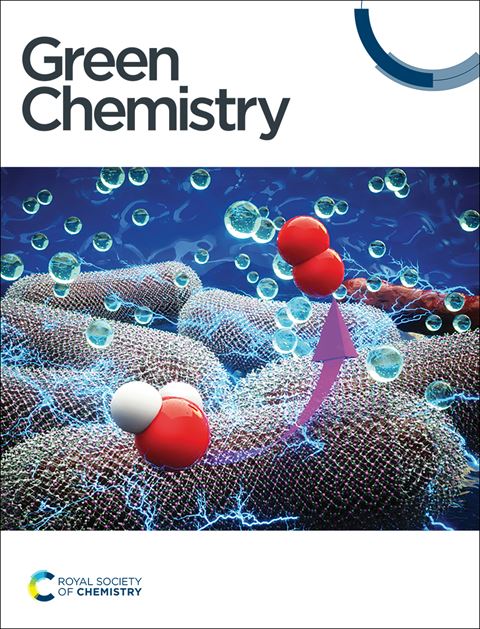Realizing CO2 emission reduction in lime and soda ash manufacturing through anion exchange†
IF 9.3
1区 化学
Q1 CHEMISTRY, MULTIDISCIPLINARY
引用次数: 0
Abstract
Lime (CaO) and soda ash (Na2CO3) are two foundational chemicals for modern civilization, and the CO2 emissions from their production processes are challenging to reduce. Furthermore, decarbonization of the lime industry could also reduce the CO2 emissions associated with cement production, for which lime is the key precursor. In this paper, we show that an anion exchange process to co-produce CaO and Na2CO3 from CaCO3 and NaOH can reduce the carbon footprint of both chemicals through industrial symbiosis. Heating energy and NaOH production are the major contributing factors towards the cost and CO2 emissions of this process, which can supply the global annual soda ash demand (∼65 Mt) and co-produce ∼50 Mt of lime in an economically sustainable manner (16% gross margin) while immediately reducing global CO2 emission by 37 Mt compared to current production methods. Using electrified industrial heat sources and heat pumps to reuse heating energy would further reduce the cost and CO2 emissions of the anion exchange process.

求助全文
约1分钟内获得全文
求助全文
来源期刊

Green Chemistry
化学-化学综合
CiteScore
16.10
自引率
7.10%
发文量
677
审稿时长
1.4 months
期刊介绍:
Green Chemistry is a journal that provides a unique forum for the publication of innovative research on the development of alternative green and sustainable technologies. The scope of Green Chemistry is based on the definition proposed by Anastas and Warner (Green Chemistry: Theory and Practice, P T Anastas and J C Warner, Oxford University Press, Oxford, 1998), which defines green chemistry as the utilisation of a set of principles that reduces or eliminates the use or generation of hazardous substances in the design, manufacture and application of chemical products. Green Chemistry aims to reduce the environmental impact of the chemical enterprise by developing a technology base that is inherently non-toxic to living things and the environment. The journal welcomes submissions on all aspects of research relating to this endeavor and publishes original and significant cutting-edge research that is likely to be of wide general appeal. For a work to be published, it must present a significant advance in green chemistry, including a comparison with existing methods and a demonstration of advantages over those methods.
 求助内容:
求助内容: 应助结果提醒方式:
应助结果提醒方式:


